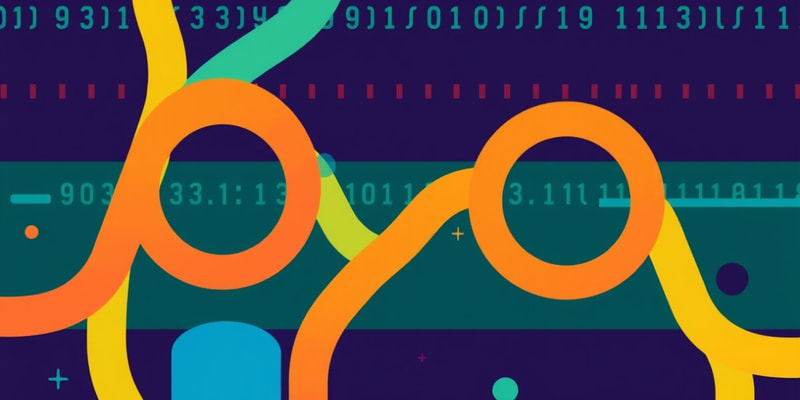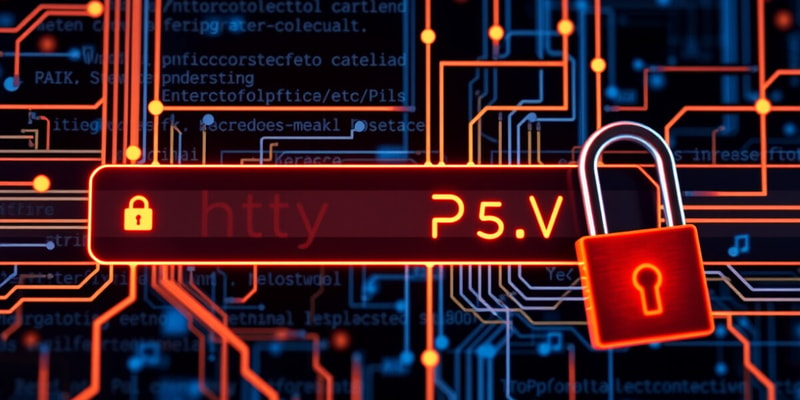Podcast
Questions and Answers
What is the primary role of the Internet Corporation for Assigned Names and Numbers (ICANN)?
What is the primary role of the Internet Corporation for Assigned Names and Numbers (ICANN)?
What does TCP stand for and what is its main function?
What does TCP stand for and what is its main function?
Which type of computing treats all machines on a network equally?
Which type of computing treats all machines on a network equally?
What are the two major subcategories of computer software?
What are the two major subcategories of computer software?
Signup and view all the answers
What is the primary function of hardware in computing?
What is the primary function of hardware in computing?
Signup and view all the answers
What does HCI stand for in computing?
What does HCI stand for in computing?
Signup and view all the answers
Which of the following describes Cloud Computing?
Which of the following describes Cloud Computing?
Signup and view all the answers
Which of the following best describes the role of protocols in networking?
Which of the following best describes the role of protocols in networking?
Signup and view all the answers
What function does the transport layer provide in protocol layers?
What function does the transport layer provide in protocol layers?
Signup and view all the answers
Which of the following best describes Mobile Cloud Computing (MCC)?
Which of the following best describes Mobile Cloud Computing (MCC)?
Signup and view all the answers
What is the primary role of the application layer in protocol layers?
What is the primary role of the application layer in protocol layers?
Signup and view all the answers
Which statement accurately describes a database key?
Which statement accurately describes a database key?
Signup and view all the answers
What defines how the logical structure of a database is organized?
What defines how the logical structure of a database is organized?
Signup and view all the answers
Which of the following describes the concept of the Internet of Things (IoT)?
Which of the following describes the concept of the Internet of Things (IoT)?
Signup and view all the answers
What is a characteristic of linear multimedia?
What is a characteristic of linear multimedia?
Signup and view all the answers
Which type of service does e-service refer to?
Which type of service does e-service refer to?
Signup and view all the answers
Study Notes
Internet Engineering
- Internet Engineering Task Force (IETF) creates internet protocol standards.
- Internet Corporation for Assigned Names and Numbers (ICANN) manages top-level domain names.
- World Wide Web Consortium (W3C) establishes web standards.
Hardware
- Processes data by following instructions.
- Manages input, output, and storage.
- Acts as the interface between communication channels and the computer system.
Software
- Applications and system software.
- Provides instructions for hardware to execute tasks.
- Manages data flow to appropriate applications.
Data
- Fundamental representation of facts and observations.
Communications
- Facilitates data sharing and processing across various systems.
- Uses protocols to ensure proper communication.
Protocols
- HTTP is for communication between web servers and browsers.
- TCP/IP connects computers on the internet and local area networks.
- XML, RSS, and SIP are newer protocols.
- TCP ensures data delivery, re-sends corrupt or lost data.
- UDP sends data without confirmation, discards corrupt data if it's not sent correctly.
Client-Server Computing
- Client computers request services from server computers.
Cloud Computing
- Software, platforms, applications, and storage hosted on servers.
- Includes SaaS (Software as a Service), PaaS (Platform as a Service), and IaaS (Infrastructure as a Service).
- Virtualization is used for server management.
Peer-to-Peer Computing
- Computers on a network act as equals, sharing resources.
- Difficult to find services/sync files/secure network access due to equal status of each computer.
Network Names by Scale
- PAN (Personal Area Network) - e.g., Bluetooth
- LAN (Local Area Network) - e.g., Wi-Fi
- MAN (Metropolitan Area Network) - e.g., Cable, DSL
- WAN (Wide Area Network) - e.g., Large ISP
- The internet
Logical Connection
- Software or virtual connections, end-to-end connections.
Physical Connections
- Use wires or physical connections.
Protocols Layers
- Physical layer (electrical signals), Data link layer (frames), Network layer (addressing), Transport layer (end-to-end connections), Application layer (services).
Internet Services
- Internet Service Providers (ISPs) connect clients to the internet.
- Web hosting services host websites on the internet.
- Domains, URLs, and IP addresses identify computers and web pages
Mobile Cloud Computing (MCC)
- Combines cloud computing, mobile computing, and wireless networks.
- Improves battery life, storage capacity, and processing power.
Network Characteristics
- Mobile: ubiquitous, distributed, portability of devices, limited storage/processing/bandwidth, context-unaware
- Cloud: centralized, portability of software, scalable storage/processing/bandwidth, context-aware
Database System
- Centralized system for data collection, management and use within a database environment.
- Includes hardware, software, people, procedures, and data, and business rules (brief, precise, and unambiguous descriptions of operations)
Administrator/Designer Roles in Databases
- Administrators manage the database itself.
- Designers create the database structure and design.
Malware Types
- Worms, viruses, Trojan horses, spyware, keyloggers, fake antivirus software
- Ransomware encrypts systems and demands payment for decryption.
Linear Multimedia
- Sequential presentation, predetermined beginning and end, user has limited control.
Nonlinear Multimedia
- User controls the experience, interaction with media, jumps in content
Hypertext
- Text with links to other texts.
Common Multimedia File Types
- Image (JPEG, PNG, BMP, WEBP)
- Audio (WAV, MP3)
- Video (MP4, MKV, OGG, AVI)
Internet of Things (IoT)
- Network of physical objects that collect and exchange data.
- Everyday objects, integrated with sensors, for data collection, analysis, and transmission.
Smart Grids
- Electrical grids using smart meters, smart appliances, renewable resources, and energy efficiency measures for improved transmission, quicker restoration after outages, reduced operation costs.
Data Analysis vs. Data Science
- Data analysis describes current or historical states; data science predicts future states.
E-Services
- Provider, receiver, delivery, and how service provider delivers the service through a designated channel.
E-Commerce
- Buying, selling, transferring, or exchanging products, services, or information using ICTs.
- Conducted through various channels, involving multiple parties (consumers, businesses, governments).
E-Learning
- Intentional learning via the internet.
- Facilitation and support for learning through ICT.
E-Government
- Using ICT to provide public services to citizens, and a way for increased government accessibility.
Studying That Suits You
Use AI to generate personalized quizzes and flashcards to suit your learning preferences.
Related Documents
Description
Explore the essential concepts of Internet engineering, hardware, software, and data communications in this comprehensive quiz. Learn about protocols, the roles of IETF and ICANN, and how hardware and software interact to facilitate data processing. Perfect for anyone looking to deepen their understanding of computer science fundamentals.




